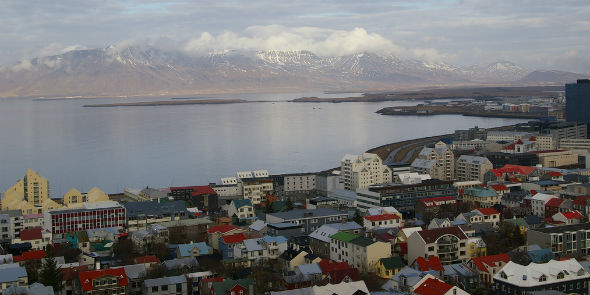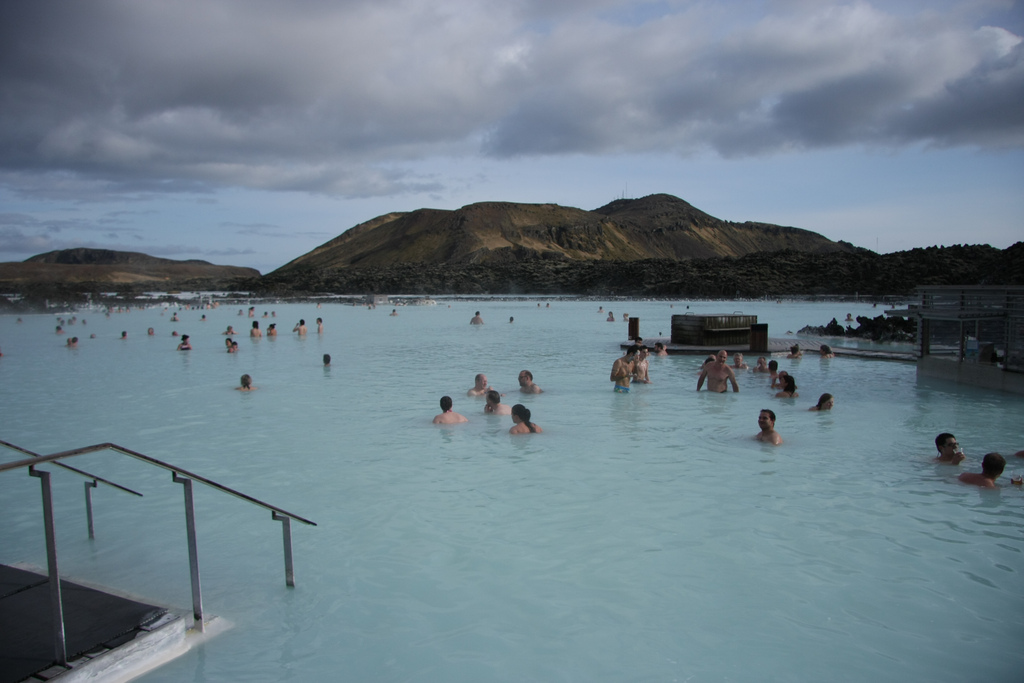Surrounded on one side by the long expanse of the Atlantic Ocean and on the other by the haunting volcanic landscape of Iceland, Reykjavik is a uniquely remote capital.

Reykjavik. (Photo: Bryan Pocius via Flickr)
It’s close to dusk by the time we get out of the Reykjavik airport. The city’s international airport is actually in Keflavik, a featureless town about 30 miles from Iceland’s first city. We drive through a flat landscape of volcanic rock towards the city. As we drive the last of the winter sun sheers milky orange light through a gap in the low grey clouds, the island’s lunar surface contrastingly black.
I get the feeling – a common sensation over the next few days – of being at the edge of things; that if I walk out to the thin black line of the horizon I’ll drop off in to an endless abyss. This mythic end-of-world feeling is grounded of course in a solid geographical reality of isolation. The island sits alone in the North Atlantic, 600 miles from continental Europe.
This isolation fascinated me, and not just for the awe-struck feeling it induced in me when I was in it. I was amazed at how a country so far from everything could still manage to be not only relevant in the world, but at the vanguard of so many things.
Consider politics: Iceland – as they’re keen to tell you on the tourist blurb on the flight in – is the site of the world’s first parliament, dating back to the 10th century. It was also the first country to elect a leader who was openly lesbian, Prime Minister Johanna Sigurdardottir in 2009. And when anti-secrecy group Wikileaks began disclosing a trove of US war secrets it was to Reykjavik they decamped to do it.
Think of art too. Bjork and Sigur Ros are two of the most interesting musical acts of recent years. Meanwhile the fiction of Icelandic crime writers like Arnaldur Indridason has been translated for audiences across the world.
Thermal Dynamics
We get to Reykjavik late and find our apartment a short walk from the center. Taking a soak in the shower I have my first whiff of the grainy sulphuric smell that is a trademark of the city’s water supply. Geothermal power heats nearly 90 per cent of all buildings in the country. The countryside is filled with hot springs and geysers.
In Reykjavik, the best and cheapest way to experience this natural resource is at one of the city’s many public baths. During our stay visiting the baths became a daily ritual. Our favorite was the outdoor baths in the Seltjarnarnes neighborhood. There’s nothing beats the feeling of sitting outside in a rainstorm, your head exposed to the lashing rain while your body is safely enveloped in the warm thermal waters.
Iceland’s most famous geothermal site is the Blue Lagoon. Located about 20 miles out of Reykjavik and just a few miles short of the airport, the lagoon is an obvious stop-off for tourists in search of pre-flight pampering.
Its waters are rich in minerals like sulphur and silica, the latter giving the lagoon its distinct white surfaces. The site is enclosed by a luxurious spa, where you can undergo all manner of treatments. Or if you prefer your tonics laced with something a little sharper, you can paddle out to the licensed bar that sits semi-submerged in the lagoon’s center.

The Blue Lagoon | Photo Chris Olson via Flickr
Reykjavik center is small and neat, its narrow streets rising sharply from the shoreline and dotted with chic boutiques and bars and restaurants serving local dishes like whale meat and skyr, a plain white yoghurt they eat by the bucketload here and which, along with the dearth of sunlight, may or may not contribute to the Icelanders being about the palest people I’ve ever laid eyes on. (To underscore the point about sunlight: in Reykjavik’s supermarkets most milk comes with supplemental vitamin D to make up for the light deficiency).
Nordic Noir
On a hill above the center is the city’s most striking building, Hallgrimur’s Church. Taking nearly 40 years to complete the edifice’s impressive concrete facade looks like a set of gigantic pan pipes and is meant to evoke the lava flows of the Icelandic landscape.
Considering how far north it is – Reykjavik is just shy of the arctic circle – the city’s climate is quite temperate. Its proximity to polar north means major differences in daylight hours between summer and winter, however. In January – when we were there – it only gets light at 10AM. The city’s nightlife, much of it on the streets peeling off from the main shopping street of Laugavegur, is spread thin by the intrusive darkness. This and the fact that Icelanders keep late hours (most don’t hit the bars till gone midnight at the weekends) mean the place feels low key.
Even so we find a some cafes full with the students. In one of them a waiter with a round boyish face and the look of entrenched melancholy that seems to be your birthright here, says I should try brennivin, a herbal spirit made from mulched potato. My girlfriend and I play a game of chess and sipping the hard liquor and glancing round at the stoic expressions on offer, I feel like I’m in a Russian novel.
Later on we walk down to the harbor side. We were hoping – like everyone who comes here – we might have seen the aurora borealis but a North Atlantic squall has settled in and at times we’ve barely been able to see to the end of the street.
Tonight is clearer but even so a sea mist hangs over the bay, evoking the city’s name, which loosely translated from old Norse means Smoke Cove. We leave the water and walk up the deserted streets, past a moodily-lit bar where the thrum of American rock hardly makes a dent on the deep and beautiful silence of the frozen north.